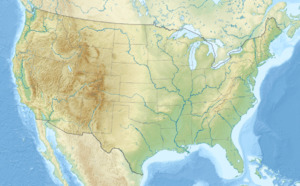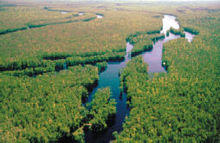| Waccamaw National Wildlife Refuge | |
|---|---|
IUCN category IV (habitat/species management area) | |
 Waccamaw National Wildlife Refuge | |
| Location | Georgetown, Horry, Marion counties, South Carolina, United States |
| Nearest city | Garden City, South Carolina |
| Coordinates | 33°38′00″N 79°05′30″W / 33.63333°N 79.09167°W |
| Area | 22,931 acres (92.80 km2) |
| Established | 1997 |
| Governing body | U.S. Fish and Wildlife Service |
| Website | Waccamaw National Wildlife Refuge |
Waccamaw National Wildlife Refuge, established in 1997, is a recent addition to the United States National Wildlife Refuge system. It is located in parts of northeastern Georgetown County, South Carolina, southern Horry, and southeastern Marion counties, and contains lands adjacent to the Pee Dee River, the Little Pee Dee River, and the Waccamaw River near their confluence. Currently the size of the refuge is 22,931 acres (92.80 km2) but plans call for the total refuge to be over 50,000 acres (200 km2).
It was founded to preserve valuable undeveloped coastal wetland and adjacent uplands that provide habitats for many species of wildlife. One endangered species that is given a home, primarily on longleaf pine forest on Sandy Island is the red-cockaded woodpecker. It is also a nesting area for swallow-tailed kites and bald eagles.
The stated objectives of this refuge are:
- Provide habitat for waterfowl, shorebirds, wading birds, raptors, neo-tropical migratory birds, and resident species.
- Environmental education and interpretation.
- Provide opportunities for hunting, fishing, and outdoor recreation.
The Refuge visitor center is located just north of Georgetown on Highway 701 overlooking the Great Pee Dee River in the small community of Yauhannah, SC.
See also
Waccamaw River Heritage Preserve—Nature preserve further north along the same river
References
![]() This article incorporates public domain material from websites or documents of the United States Fish and Wildlife Service.
This article incorporates public domain material from websites or documents of the United States Fish and Wildlife Service.

